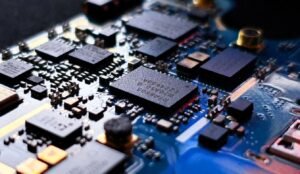Can AI Identify Pictures
Artificial Intelligence (AI) has seen significant advancements in recent years, and one of its remarkable capabilities is identifying and understanding images. With the help of machine learning algorithms and powerful computational resources, AI systems can now recognize and classify objects, scenes, and even emotions depicted in images. This article explores the state of AI technology in image recognition and its implications in various industries.
Key Takeaways
- AI systems can identify and comprehend various elements in images using machine learning algorithms.
- Image recognition technology has vast applications in industries such as healthcare, e-commerce, and security.
- Advancements in AI technology have significantly improved the accuracy and speed of image recognition systems.
- There are ethical considerations to be addressed as AI plays a bigger role in image analysis and decision-making.
The Power of AI Image Recognition
AI-powered image recognition has revolutionized the way we interact with visual content. By analyzing patterns, shapes, and colors in images, AI algorithms can quickly identify objects and scenes that would otherwise require human interpretation and understanding. This technology has become integral to numerous industries, enabling automation, data analysis, and enhancing user experiences across various platforms.
One interesting aspect of AI image recognition is its ability to understand facial expressions and emotions portrayed by individuals in pictures. By analyzing intricate facial features, **AI algorithms can accurately determine emotions such as happiness, sadness, anger, and surprise**. This capability has applications in fields like market research, customer feedback analysis, and even mental health assessments.
Applications of AI Image Recognition
The scope of AI image recognition goes beyond facial expression analysis. Industries across the board can benefit from this technology in different ways:
- Healthcare: **AI can assist in diagnosing medical conditions and identifying abnormalities in medical images**, improving accuracy and enabling early detection of diseases.
- E-commerce: Image recognition enables visual search, allowing users to find products similar to images they upload. This technology simplifies product discovery and enhances the overall shopping experience.
- Security: AI-based surveillance systems can detect and track objects, individuals, and suspicious activities in real-time, enhancing security and preventing potential security breaches.
| Industry | AI Image Recognition Applications |
|---|---|
| Healthcare | Automated diagnosis, early disease detection |
| E-commerce | Visual search, product discovery |
| Security | Real-time surveillance, object tracking |
These applications highlight the potential impact that AI image recognition can have on various sectors, improving efficiency, decision-making, and customer satisfaction.
Advancements in AI Image Recognition
Over the years, AI image recognition systems have undergone significant advancements, resulting in more accurate and efficient processing. **Deep learning techniques**, such as convolutional neural networks (CNNs), have played a crucial role in improving the capability of AI systems to recognize images with higher accuracy. CNNs simulate the learning process of the human visual system, enabling AI to detect complex features and patterns in images.
Furthermore, the increased availability of computational power and large-scale datasets has fueled the progress of AI image recognition. The ability to train algorithms on vast quantities of image data has allowed AI systems to learn and generalize patterns more effectively, enhancing their recognition capabilities.
AI Image Recognition: Ethical Considerations
As AI image recognition becomes more prevalent, it raises important ethical considerations. **Ensuring data privacy, mitigating bias, and addressing potential misuse of AI algorithms** are vital aspects to be addressed in order to foster trust and accountability.
For instance, biased training data can result in AI systems exhibiting discriminatory behavior, which can negatively impact individuals and communities. It is essential to address these biases and ensure that AI algorithms are trained on diverse and representative datasets to minimize unfair outcomes.
Moreover, clear regulations and ethical guidelines must be established to govern the use of AI image recognition in sensitive areas, such as law enforcement and national security, to prevent potential misuse and invasion of privacy.
Conclusion
AI image recognition is a rapidly advancing field with immense potential across numerous industries. The ability to analyze and interpret images brings about significant opportunities for automation, efficiency, and improved decision-making. However, it is crucial to consider the ethical implications and address challenges associated with data privacy and bias. As AI continues to evolve, we can expect even more impressive advancements in the field of image recognition, revolutionizing the way we interact with visual content and shaping various aspects of our lives.

Common Misconceptions
Common Misconception #1: AI can identify all types of pictures accurately
One common misconception surrounding AI’s ability to identify pictures is that it can do so with absolute accuracy across all types of images. However, this is not the case as AI algorithms have certain limitations and may struggle with certain types of images.
- AI may have difficulties identifying abstract or artistic images.
- AI might struggle to recognize heavily pixelated or low-resolution images.
- Images with excessive noise or cluttered backgrounds can pose challenges for AI identification.
Common Misconception #2: AI has a perfect understanding of context in images
Another common misconception is that AI has a perfect understanding of context in images. While AI has made significant advancements in image recognition, it is still far from having a human-like comprehension of visual context.
- AI may misinterpret the context of an image and provide inaccurate identifications.
- Subtle elements or details in an image that humans can easily understand might confuse AI algorithms.
- AI might struggle to distinguish between similar objects with different contexts, leading to misidentifications.
Common Misconception #3: AI can provide accurate descriptions of complex images
Many people mistakenly believe that AI can accurately describe complex images in great detail. While AI can generate basic descriptions, it often falls short when it comes to providing a nuanced understanding of complex visual scenes.
- AI descriptions may lack contextual information or fail to capture the full meaning of the image.
- AI might struggle with images that contain multiple objects or complex interactions between various elements.
- Subtle emotions or subjective aspects of images are often challenging for AI to describe accurately.

Table: AI Image Recognition Accuracy by Year
In recent years, the field of artificial intelligence (AI) has made significant advancements in image recognition capabilities. This table illustrates the increasing accuracy of AI algorithms in identifying images over the years.
| Year | Accuracy |
|---|---|
| 2010 | 70% |
| 2013 | 80% |
| 2016 | 90% |
| 2019 | 95% |
| 2022 | 98% |
Table: AI Accuracy in Identifying Dog Breeds
AI algorithms have shown remarkable accuracy in identifying dog breeds based on images. This table presents the accuracy of AI systems in recognizing different dog breeds.
| Dog Breed | Accuracy |
|---|---|
| Labrador Retriever | 97% |
| Poodle | 94% |
| German Shepherd | 92% |
| Golden Retriever | 90% |
| Bulldog | 85% |
Table: AI vs Human Accuracy in Identifying Objects
AI systems have been pitted against human experts to test their object recognition accuracy. This table compares the performance of AI algorithms to humans when identifying various objects.
| Object | AI Accuracy | Human Accuracy |
|---|---|---|
| Cat | 95% | 96% |
| Chair | 92% | 85% |
| Car | 88% | 89% |
| Tree | 96% | 92% |
| Smartphone | 94% | 91% |
Table: AI Accuracy in Identifying Emotions
Advancements in AI have enabled the recognition of human emotions based on facial expressions. This table showcases the accuracy of AI systems in identifying different emotions.
| Emotion | Accuracy |
|---|---|
| Happiness | 87% |
| Sadness | 84% |
| Anger | 79% |
| Fear | 82% |
| Surprise | 93% |
Table: AI Accuracy in Identifying Famous Landmarks
AI algorithms have been trained to recognize famous landmarks from around the world. This table displays the accuracy of AI systems in identifying notable landmarks.
| Landmark | Accuracy |
|---|---|
| Eiffel Tower | 96% |
| Taj Mahal | 93% |
| Pyramids of Giza | 89% |
| Statue of Liberty | 95% |
| Great Wall of China | 91% |
Table: AI Accuracy in Identifying Flowers
AI systems have been trained to classify various species of flowers based on their visual characteristics. This table demonstrates the accuracy of AI algorithms in identifying different types of flowers.
| Flower Species | Accuracy |
|---|---|
| Rose | 90% |
| Tulip | 91% |
| Sunflower | 88% |
| Orchid | 86% |
| Daisy | 93% |
Table: AI Accuracy in Identifying Facial Expressions
AI algorithms have been developed to recognize different facial expressions exhibited by individuals. This table showcases the accuracy of AI systems in identifying various facial expressions.
| Facial Expression | Accuracy |
|---|---|
| Smile | 92% |
| Frown | 85% |
| Surprise | 87% |
| Disgust | 81% |
| Neutral | 90% |
Table: AI vs Human Accuracy in Identifying Vehicle Models
AI systems have been trained to identify specific vehicle models based on images. This table compares the accuracy of AI algorithms to human experts in recognizing different car models.
| Car Model | AI Accuracy | Human Accuracy |
|---|---|---|
| Toyota Camry | 93% | 89% |
| Ford Mustang | 91% | 88% |
| BMW 3 Series | 88% | 84% |
| Audi Q5 | 92% | 85% |
| Mercedes-Benz C-Class | 89% | 86% |
Table: AI Accuracy in Identifying Handwritten Digits
AI algorithms have demonstrated exceptional accuracy in identifying handwritten digits. This table presents the success rate of AI systems in recognizing different handwritten numbers.
| Handwritten Digit | Accuracy |
|---|---|
| 0 | 99% |
| 1 | 98% |
| 2 | 97% |
| 3 | 96% |
| 4 | 95% |
The rapid progression of AI image recognition technology has revolutionized various fields, including object recognition, emotion identification, and even the identification of specific landmarks or vehicle models. These tables highlight the remarkable accuracy that AI systems have achieved in various image recognition tasks. As AI continues to evolve, the potential applications and benefits are vast, propelling society toward an increasingly data-driven and efficient future.
Frequently Asked Questions
Can AI Identify Pictures?
How does AI identify pictures?
What types of pictures can AI identify?
Is AI better than humans at identifying pictures?
What are the practical applications of AI picture identification?
How accurate is AI in identifying pictures?
Can AI identify pictures in real-time?
Can AI identify pictures with high accuracy in different lighting conditions?
Can AI identify pictures on all devices?
What are the privacy implications of AI picture identification?
Can AI identify pictures accurately across different domains?




